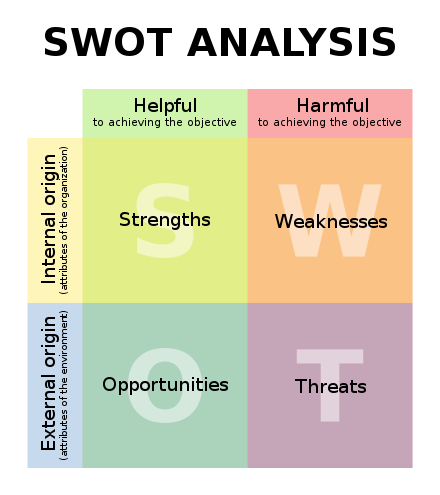Glossary
Balanced Scorecard
A balanced scorecard is a strategic performance measurement framework that provides a balanced view of an organization's performance across multiple dimensions. It goes beyond financial metrics and incorporates both financial and non-financial measures to assess the organization's overall health and progress towards its strategic goals. The balanced scorecard framework typically includes four key perspectives:
- Financial Perspective: Focuses on financial indicators such as revenue, profitability, and return on investment to evaluate the organization's financial performance.
- Customer Perspective: Looks at measures related to customer satisfaction, loyalty, and market share to assess how well the organization is meeting customer needs and expectations.
- Internal Process Perspective: Examines the efficiency and effectiveness of internal processes and operations to identify areas for improvement and ensure optimal performance.
- Learning and Growth Perspective: Considers the organization's ability to develop and leverage its human capital, technological capabilities, and organizational culture to foster innovation and continuous improvement.
By using a balanced scorecard, organizations can track performance across these different perspectives and gain a comprehensive understanding of their overall performance. It helps align various areas of the organization towards a common set of objectives, facilitates communication and accountability, and enables strategic decision-making based on a more holistic view of performance.
Porter's Five Forces

A framework developed by Michael Porter, a renowned strategy expert. It analyzes the competitive dynamics and attractiveness of an industry by considering five key forces:
- Threat of New Entrants: The likelihood of new competitors entering the market and challenging existing players.
- Bargaining Power of Suppliers: The influence suppliers have over the industry in terms of pricing, quality, and availability of inputs.
- Bargaining Power of Buyers: The influence customers have over the industry in terms of demanding lower prices, better quality, or more favorable terms.
- Threat of Substitute Products or Services: The extent to which alternative products or services can fulfill the same customer needs and pose a threat to existing offerings.
- Intensity of Competitive Rivalry: The level of competition among existing firms in the industry, including factors like price competition, marketing strategies, and product differentiation.
By analyzing these forces, businesses can gain insights into the competitive landscape, identify potential risks and opportunities, and develop effective strategies to position themselves for success within their industry.
Related Terms: SWOT Analysis, Six Forces Model
Random Sampling
Random sampling is a method used in statistics and research to select a subset of individuals or elements from a larger population in a way that every individual or element has an equal chance of being chosen.
In a random sample, each member of the population has a known and unbiased probability of being included in the sample. This ensures that the sample is representative of the population, allowing for generalizations and statistical inferences to be made with greater confidence.
Random sampling helps minimize bias and increase the likelihood of obtaining accurate and reliable results in research studies and surveys.
In the context of business, random sampling can be used in various ways:
- Market Research: Used to select a representative sample of their target market to gather insights and feedback from a diverse group of customers, helping them make informed business decisions.
- Customer Surveys: Used to select a subset of customers to participate in surveys or feedback programs. By randomly selecting participants, they can obtain a more unbiased and representative sample, enabling them to gather valuable insights about customer preferences, satisfaction, and needs.
- Product Testing: Employed to select a group of participants to try out new products or prototypes. This helps businesses gauge the market acceptance, gather feedback, and make necessary improvements before launching the product on a larger scale.
- Employee Surveys: Used for conducting employee surveys or opinion polls within an organization. By selecting a random sample of employees, businesses can gather insights into employee satisfaction, engagement, and areas for improvement, which can inform HR policies and initiatives.
Related Terms: Stratified Sampling
Stratified Sampling
Stratified sampling is a sampling technique where the population is divided into distinct subgroups or strata, and a random sample is selected from each stratum. Each subgroup represents a specific characteristic or attribute of the population.
Stratified sampling is used in business to ensure a more accurate representation of the population and to gather insights specific to different subgroups.
In the scope of doing business, stratified sampling can be utilized in various ways:
- Market Segmentation: By dividing the target market into distinct strata based on demographics, geographic locations, or customer preferences, they can ensure that the sample reflects the diversity within each segment. This allows for more targeted marketing strategies and product development.
- Customer Satisfaction Surveys: Used to ensure that feedback is collected from different customer segments proportionately. This helps businesses identify variations in satisfaction levels across different customer groups and tailor their strategies to address specific needs.
- Quality Control: In manufacturing or production processes, stratified sampling can be used to monitor product quality. By sampling from different production lines, shifts, or locations, businesses can assess whether quality standards are being maintained consistently across different segments of the production process.
- Employee Surveys: Employed in employee surveys to obtain insights from different employee groups, such as different departments, job levels, or locations. This allows businesses to understand the varying perspectives, experiences, and needs of different employee segments and make informed decisions regarding employee engagement and organizational improvements.
Related Terms: Random Sampling
Six Forces Model
The Six Forces Model, also known as the McKinsey 7S Framework, is a management tool that helps analyze the internal and external factors influencing an organization's performance and success. While there is no commonly accepted "Six Forces Model" in the same way as Porter's Five Forces, I can provide an overview of the McKinsey 7S Framework, which is widely used in strategic management.
The McKinsey 7S Framework examines seven interconnected elements within an organization that collectively shape its effectiveness and ability to achieve its objectives. These elements are:
- Strategy: The organization's plan of action to achieve its goals and create a competitive advantage.
- Structure: The formal hierarchy, reporting lines, and organizational design that define how work is divided, coordinated, and controlled.
- Systems: The processes, procedures, and routines that govern how the organization operates, including information systems, decision-making processes, and performance measurement.
- Shared Values: The core beliefs, values, and guiding principles that shape the organization's culture and define its identity.
- Skills: The capabilities, competencies, and expertise possessed by individuals within the organization.
- Staff: The organization's human resources, including their qualifications, experiences, and alignment with the strategic objectives.
- Style: The leadership style and behavior exhibited by top management, which influences the organizational culture and sets the tone for the entire organization.
The Six Forces Model provides a holistic view of an organization and highlights the interdependencies between these key factors. It helps organizations assess their current state, identify areas of misalignment or weakness, and develop strategies to ensure that all elements are aligned and supportive of each other, ultimately driving organizational success.
Related Terms: Porter's 5 Forces, SWOT Analysis
SWOT Analysis

A SWOT analysis is a strategic planning tool used to evaluate the strengths, weaknesses, opportunities, and threats of a business or project. The acronym stands for:
- Strengths: Internal factors that give the business a competitive advantage or unique capabilities.
- Weaknesses: Internal factors that hinder the business's performance or put it at a disadvantage compared to competitors.
- Opportunities: External factors or market conditions that can be exploited to create growth or improve the business's position.
- Threats: External factors or challenges that pose risks to the business's success or profitability.
By conducting a SWOT analysis, businesses can gain a comprehensive understanding of their current situation and the external factors affecting their operations. This analysis helps identify areas of improvement, leverage strengths, mitigate weaknesses, capitalize on opportunities, and prepare for potential threats. It serves as a foundation for strategic decision-making and developing effective action plans to achieve business objectives.
Related Terms: Porter's 5 Forces, Six Forces Model






